NavSource Online:
Patrol Combatant-Missile (Hydrofoil)
Photo Archive
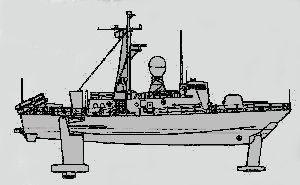
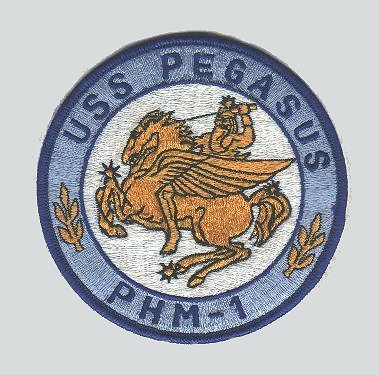
Pegasus (PHM-1)
November - Whiskey - Golf - Tango


Specifications:
| Click on thumbnail for full size image |
Size | Image Description | Source | |
|---|---|---|---|---|
| Pegasus | ||||
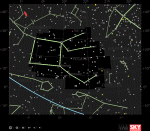 |
105k | Pegasus is a constellation in the northern sky, named after the winged horse Pegasus in Greek mythology. It was one of the 48 constellations listed by the 2nd-century astronomer Ptolemy, and is one of the 88 constellations recognized today. With an apparent magnitude varying between 2.37 and 2.45, the brightest star in Pegasus is the orange supergiant Epsilon Pegasi, also known as Enif, which marks the horse's muzzle. Alpha (Markab), Beta (Scheat), and Gamma (Algenib), together with Alpha Andromedae (Alpheratz) form the large asterism known as the Square of Pegasus. Twelve star systems have been found to have exoplanets. 51 Pegasi was the first Sun-like star discovered to have an exoplanet companion |
Tommy Trampp | |
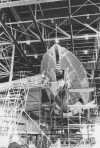 |
223k | c. September 1974 Under construction National Archives photo 428-GX-1106548 |
Tracy White | |
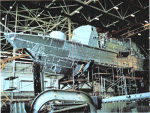 |
136k | U.S. Navy photo from the March 1975 edition of All Hands magazine | Joe Radigan | |
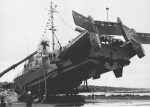 |
123k | |||
 |
186k | Inboard profile by Norman Friedman from U.S. Small Combatants: An Illustrated Design History, by Norman Friedman | Robert Hurst | |
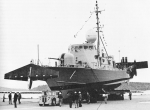 |
254k | 9 November 1974 Boeing Marine Systems, Seattle, WA Prior to her launch Photo from U.S. Small Combatants: An Illustrated Design History, by Norman Friedman |
||
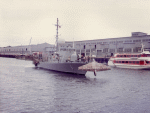 12160137 |
53k | Three views of Pegasus underway at Seattle, 05 May 1975. Note the civilian hydrofoil and the Hamilton-class Coast Guard cutter in the background. Photos from unknown source, numbered D4C-116597-24, D4C-116597-6 and D4C-116597-12 |
Naval Historical Center | |
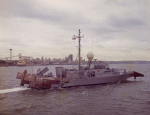 12160138 |
53k | |||
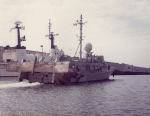 12160139 |
53k | |||
| USS Pegasus (PHM 1) | ||||
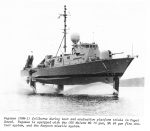 |
169k | U.S. Navy photo from the NAVSEA Journal | Bob Bush | |
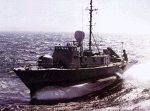 |
69k | U.S. Navy photo | International Hydrofoil Society web site | |
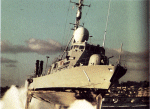 |
83k | Test run off San Diego, CA | Robert Hurst | |
 |
106k | Harpoon missile launch | ||
 |
331k | U.S. Navy photo | ||
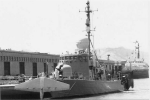 |
62k | . | Richard Miller, BMCS, USNR, Ret. | |
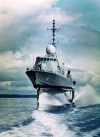 |
264k | Photo from National Museum of the U.S. Navy | Michael Mohl | |
 |
420k | |||
 |
176k | Tommy Trampp | ||
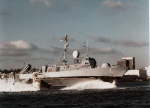 |
247k | Photo from the Key West Art and Historical Society Collection. Courtesy of Florida Keys Public Libraries | Robert Hurst | |
 |
125k | Test run off San Diego, CA. The foils can clearly be seen beneath the surface of the water U.S. Navy photo |
||
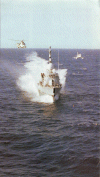 |
1,112k | In company with a Sikorsky SH-3G Sea King and a McDonnell Douglas TA-4J Skyhawk of Composite Squadron ONE, off Hawaii U.S. Navy photo |
||
 |
75k | c. 1975 Visiting San Francisco, CA U.S. Navy photo |
||
 |
78k | U.S. Navy photo from the September 1975 edition of All Hands magazine | Joe Radigan | |
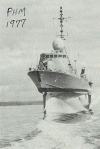 |
72k | Original photo: U.S. Navy photo from the July 1976 edition of All Hands magazine Replacement photo: From NAVSEA Journal |
Original photo: Joe Radigan Replacement photo: Bob Bush |
|
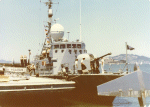 |
162k | c. Summer 1978 Visiting San Francisco, CA Alcatraz Island is in the background |
Robert M. Cieri | |
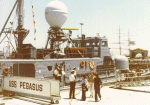 |
177k | c. Summer 1978 Visiting San Francisco, CA |
||
 |
153k | c. 1978 San Diego, CA |
Richard Stiles | |
 |
240k | c. 1980s Tied up at Trumbo Point, Key West, FL Photo by Raymond L. Blazevic Photo from the Key West Art and Historical Society Collection. Courtesy of Florida Keys Public Libraries |
Robert Hurst | |
 |
194k | c. 1980 At Trumbo Pier D-1, Key West, FL U.S. Navy photo courtesy of Florida Keys Public Libraries |
||
 |
457k | 1 January 1984 A starboard bow view of Pegasus as she engages in high speed foilborne maneuvering U. S. Navy photo DN-ST-86-02402 by PHAA David Carerras |
Robert M. Cieri | |
 |
339k | 1 May 1984 Pegasus, in the foreground and the USS Aries (PHM 5), are shown underway hullborne, with the guided-missile destroyer USS Preble (DDG 46) in the background. U. S. Navy photo DN-SC-86-04785 by PHAA Alan Elliott |
||
 |
226k | c. February 1988 Tied up at Trumbo Point, Key West, FL Photo by Raymond L. Blazevic Photo from the Key West Art and Historical Society Collection. Courtesy of Florida Keys Public Libraries |
Robert Hurst | |
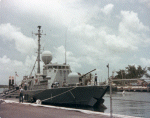 |
189k | c. 1990 Tied up at Trumbo Annex of the Naval Air Station Key West, FL U.S. Navy photo courtesy of the Florida Keys Public Libraries |
||
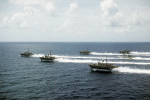 |
334k | 13 June 1993 All six vessels of Patrol Combatant Missile Hydrofoil Squadron TWO travel in formation en route to Naval Amphibious Base, Little Creek, VA for decommissioning. The formation includes the Pegasus, USS Hercules (PHM-2), USS Taurus (PHM-3), USS Aquila (PHM-4), USS Aries (PHM-5) and USS Gemini (PHM-6) U.S. Navy photo DN-ST-93-05725 by PH2 Douglas F. Mooney |
||
 |
398k | 13 June 1993 Vessels of Patrol Combatant Missile Hydrofoil Squadron 2 travel in formation en route to Naval Amphibious Base, Little Creek, Va. for decommissioning. The hydrofoils include: the Pegasus, USS Hercules (PHM-2), USS Taurus (PHM-3), USS Aquila (PHM-4), USS Aries (PHM-5) and the USS Gemini (PHM-6) U.S. Navy photo DN-SC-93-05730 from National Museum of the U.S. Navy |
Michael Mohl | |
| Radio controlled model of Pegasus | ||||
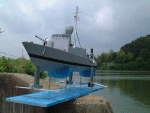 |
237k | Radio controlled, 1/50 scale, operational model of Pegasus constructed by Yoichi Takahashi | Yoichi Takahashi Kyoto, Japan |
|
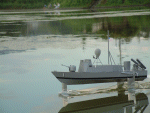 |
205k | Foil-borne radio controlled, 1/50 scale, operational model of Pegasus constructed by Yoichi Takahashi | ||
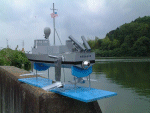 |
93k | Rear view of radio controlled, 1/50 scale, operational model of Pegasus constructed by Yoichi Takahashi | ||
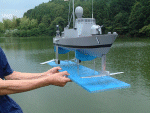 |
124k | Radio controlled, 1/50 scale, operational model of Pegasus constructed by Yoichi Takahashi | ||
| Commanding Officers | ||
| PCU | LCDR Erich H. Ashburn, USN | 9 November 1974 |
| PCU | LCDR David Peter Yonkers, USN | 1977 |
| 01 | LCDR William John Erickson, USN - USNA Class of 1965 | 9 July 1977 - 31 July 1979 |
| 02 | LCDR Charles Westervelt Penque, Jr., USN - USNA Class of 1967 | 31 July 1979 - 14 August 1979 |
| 03 | LCDR Glenn Frederic Gottschalk, USN - USNA Class of 1968 | 14 August 1979 - 14 December 1979 |
| 04 | LCDR James Worthington Orvis, USN | 14 December 1979 - 21 June 1981 |
| 05 | LCDR Thomas Herbert Berns, USN - USNA Class of 1968 | 21 June 1981 - 5 July 1983 |
| 06 | LCDR Drew Wentz Beasley, USN | 5 July 1983 - 21 October 1985 |
| 07 | LCDR Robert Lewis Holt, USN | 21 October 1985 - 15 January 1988 |
| 08 | LCDR Michael Charles Beck, USN | 15 January 1988 - 21 October 1989 |
| 09 | LCDR Martin Alan Drake, USN | 21 October 1989 - 10 October 1991 |
| 10 | LCDR William Frederick Laeson, USN | 10 October 1991 - 3 July 1993 |
| 11 | LCDR Douglas E. LeMasters, USN | 3 July 1993 - 30 July 1993 |
|
|
| Back to the Main Photo Index | Back to the Patrol Craft/Gunboat/Submarine Chaser Ship Index | Back to the Patrol Combatant-Missile (Hydrofoil) - (PHM) Photo Index |
| Comments, Suggestions, E-mail Webmaster |
|
This page created by Gary P. Priolo and maintained by Dave Wright |